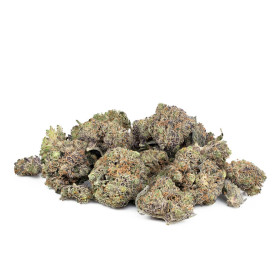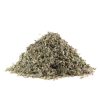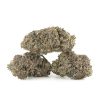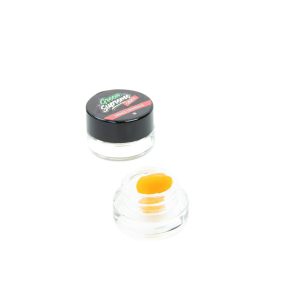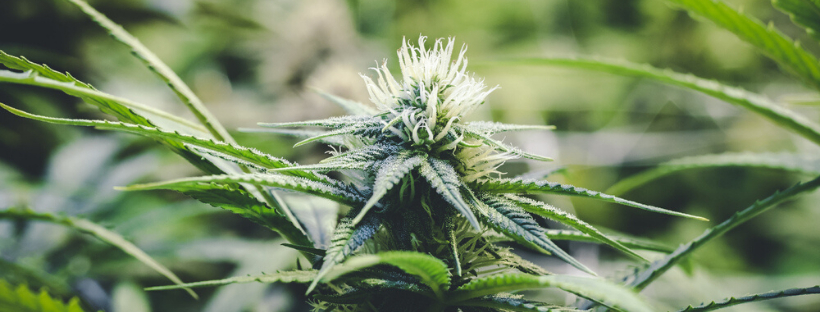Recently, it has been widely discussed whether or not cannabis can be used to treat cancer patients. The so-called proof that cannabinoids and cannabis can cure cancer is very misleading.
There is a lot of false scientific research online, so you must always look for legitimate studies before believing in them.
This article will discuss the possibility of cancer treatment with cannabis and cannabinoids. Keep reading to learn more.
What’s Cannabis?
Around the globe, the cannabis plant is grown and cultivated commercially. Generally, cannabis has many names. Some call it weed, kush, hemp, marijuana, etc.
Cannabis may help in treating nausea and vomiting. Meanwhile, based on clinical evidence, medicinal cannabis can help relieve certain symptoms of multiple sclerosis, AIDS, and other weakening conditions.
What are Cannabinoids?
Although cannabis and cannabinoids sound similar, they are not the same thing. Cannabinoids are compounds found in cannabis and other plants. Generally, cannabis has over 450 chemical compounds, which are mostly cannabinoids.
The following cannabinoids are particularly interesting to researchers:
- Delta-9-tetrahydrocannabinol (THC) – this psychoactive substance can affect how the brain works, creating a feeling of euphoria or “high.”
- Cannabidiol (CBD) – may relieve pain, decrease inflammation and reduce anxiety without creating psychoactive effects.
Cannabinoid Drugs
The following cannabinoid drugs are approved in the US for medicinal use:
1. Dronabinol (Marinol®/Syndros®) contains delta-9-tetrahydrocannabinol (THC). It is approved by the US Food and Drug Administration (FDA) to treat nausea and vomiting due to cancer chemotherapy and poor appetite and weight loss in AIDS patients.
2. Nabilone (Cesamet®) – this acts much like THC. It can be consumed by mouth to treat chemotherapy-induced nausea when other drugs can’t work.
Nabiximols is a cannabinoid drug still being studied in the US. This drug comprises a whole-plant extract with THC and cannabidiol (CBD) in an almost one-to-one mix. The drug is available in Canada and parts of Europe to treat cancer pain, muscle spasms, and multiple sclerosis (MS) pain.
While it’s not yet approved in the US, it’s being tested in clinical trials to determine if it can assist in some conditions.
Types of Cannabis Compounds
Cannabis users can choose from two ways to consume marijuana. Generally, the method of marijuana consumption can determine how long the effect lasts.
Inhaled marijuana: Smoked marijuana delivers THC directly into the bloodstream and quickly travels to the brain. However, the effects of cannabis smoke don’t last as long as consuming edible marijuana. This can be ideal for a quick boost or when you’re nauseous and want a fast remedy.
Edible marijuana: When the marijuana is consumed by mouth, the THC is poorly processed and may take hours to absorb fully. When the THC is absorbed, the liver processes it, which creates a second psychoactive compound. This substance acts on the brain and changes mood or consciousness, which affects the brain differently than THC.
Generally, knowing the amount of THC in foods is important because getting too much may cause overdose symptoms.
How do Cannabinoids Work Inside the Body?
In the human body, the cannabinoids we produce are called endocannabinoids. This interacts with molecules that are located in cells (cannabinoid receptors). A second form has been found in immune tissues.
These chemicals form the endocannabinoid system, and the network controls multiple body organs, including sleep memory learning, food digestion, pain control, inflammation, and immunity. Cannabinoids like THC or CBD have the same properties and can influence the function of their receptors in the brain.
How Cannabis Affects Cancer Symptoms
How does marijuana affect the symptoms of cancer patients? As mentioned, cannabis ingestion can be a relief for nausea and vomiting. Additionally, smoking cannabis may help treat neuropathic pain. Scientific research shows that people who took marijuana extracts in clinical trials needed less pain medicine.
Recently, clinical implications have reported that cannabinoids and THC may be able to kill or slow the growth of cancer cells. Various animal studies also show that some cannabinoids may reduce or slow the spread of certain types of cancer.
More studies are planned on whether cannabis and cannabinoids can be effective in cancer treatment.
So far, studies show that cannabis and cannabinoids can be safe in treating cancer, but they do not appear effective in controlling or curing the disease. Therefore, depending solely on marijuana as a cancer treatment while delaying conventional medical care may bring serious health consequences.
Possible Dangers of Marijuana Consumption
Cannabis smoking may have serious health consequences, especially if done heavily. Heavy marijuana smoke increases the risk of developing lung cancer compared to those who smoke marijuana lightly.
The most sought-after effect of marijuana is the feeling of euphoria or “high.” However, this also can lower the user’s control over movement, cause disorientation, and sometimes create negative thoughts or feelings of paranoia and anxiety.
While smoked marijuana provides various cannabinoids and THC to the body, it also delivers harmful substances to users and those nearby. Many of the same substances are found in tobacco smoke.
A user’s experience can be very difficult to determine because of various strains’ different levels of active compounds. The effects can also differ based on how deeply and for how long the user inhales. Likewise, the effects of ingesting marijuana orally can vary between cannabis users. Also, some chronic users can develop an unhealthy dependence on marijuana.
Smoking Marijuana
The International Lung Cancer Consortium collected information from 6 case-control studies conducted in the US, Canada, UK, and New Zealand for a clinical trial relationship between cannabis use and the risk of lung cancer.
Unconditional logistic regression with adjustments for socioeconomic factors, tobacco consumption status, and pack years was employed to determine research links between cannabis lung cancer and smoking.
ILCC established no correlation for small cell lung cancer based on a small sample size. In never smokers, there were marginal links between cannabis use and cancer. A slight positive monotonic correlation between long-term cannabis usage and lung cancer was found through polynomial modeling; however, precision was poor at high exposure levels.
The pooled cancer research findings show weak evidence of an elevated likelihood of lung cancer in long-term or chronic cannabis users; however, extensive use may have adverse effects.
Can Cannabis Decrease the Chance of Cancer?
There’s no there’s proof that medical cannabis can decrease cancer risk. Some research suggests that the body can slow tumor cell growth.
One experiment included giving mice large doses of THC that were purified. The mice appeared to have less chance of developing cancer. However, this experiment isn’t sufficient to solidify that cannabis or cannabinoids can eliminate people’s people’s.
Does Cannabis Cause Cancer?
The answer is less clear regarding whether cannabis use causes cancer because those who smoke cannabis mix it with tobacco, which can also cause cancer.
Smoked cannabis, like tobacco, is known to contain compounds that increase the risk of developing cancer. The danger you put yourself in is proportional to your smoking habits. Some research suggests that smoking cannabis differently from tobacco may have a different chance of lung cancer risk.
Cigarette smoke is known to cause lung damage, but research shows that cannabis smoke may not be as harmful.
Cannabis for Cancer Treatment
Using a highly pure THC and CBD mixture has shown the most promise in laboratory experiments. In contrast, synthetic cannabinoids like JWH-133 have shown potential in research settings.
Lab experiments examining many types of cancer, including the malignant brain, prostate, breast, lung, bladder, and pancreatic cancer, have shown surprising results.
The main takeaway, however, is that cannabinoids are not a “universal” cancer treatment because different cannabinoids seem to have distinct effects on different types of cancer.
High concentrations of THC are effective at killing cancer cells but also destroy the cells lining the blood vessels.
Cannabinoids, depending on the dose and the number of cannabinoid receptors on the cancer cells, can either promote the growth of cancer cells or have various other effects.
Cannabis as Cancer Therapy
Cancer research on cannabis usage for medical cannabis and recreational drugs has drastically changed in the last decade. Yet, studies regarding the harms and advantages of cannabis and cannabinoid use have lagged far behind the growing media advocacy and the use of these substances by the wider populace and cancer patients.
Projects and funding opportunity announcements involving cannabis have gathered support from the National Cancer Institute (NCI).
The conference aimed to highlight the state of the science surrounding cannabis, including its chemical components, such as cannabis sativa or naturally occurring cannabinoids, and cancer research utilizing cannabis.
Generally, this includes cancer epidemiology, use in cancer patients, cancer biology and prevention, and preclinical and clinical cancer symptom and treatment symptom management with cannabis as cancer therapy.
What Effect Does Cannabis Have on Relieving Cancer-related Pain?
Cannabinoids show promise in lowering cancer-related discomfort and treatment-related detrimental effects, according to the available data.
However, determining an appropriate dosage of medicinal cannabis might be difficult. A cancer patient’s patient’s regulated cannabis use may be compromised because smoking or consuming cannabis in tea typically yields a dose difficult to predict.
For this reason, scientists are investigating novel dosage strategies, such as mouth sprays, which provide a consistent and titratable dose. Cannabinoids effectively treat various cancer-related concerns; some of these are included below.
Nabilone and Dronabinol (Synthetic THC)
These two cannabinoid-based medicines have been used to treat chemotherapy-induced vomiting and nausea since the 1980s. Cannabinoids, however, are typically only used when all other options have been exhausted and are dangerous or ineffective.
The legalization of medical cannabis for palliative usage has occurred in several regions worldwide, particularly for treating cancer pain. However, determining an appropriate dosage of herbal cannabis might be difficult.
A patient’s regulated cannabis use may be compromised because marijuana smoking or consuming cannabis in tea typically yields a dose difficult to predict.
Sativex (Nabiximols)
Sativex has been the subject of a massive clinical trial in the UK to see whether or not it can treat cancer pain that does not respond to other treatments. No statistically significant change in self-reported pain levels between treatment and placebo was observed.
Clinical data is sparse, but cannabinoids may potentially treat cancer patients and weight loss (cachexia).
Both clinical trials that compared groups of cancer patients’ patients given THC, placebo, and cannabis extract failed to establish a significant change between the therapies and were halted prematurely.
Groups Exploring Cannabinoids and Cancer
The effectiveness of cannabis in preventing cancer cells remains unclear. Some studies suggest endocannabinoids may be able to reduce tumor formation. When examining mice with cannabis, the results from tests showed the rats had fewer risky cancers than those without cancer.
It is still not clear, based on scientific evidence, Cannabinoid use has been shown to reduce cancer risk among cancer patients.




